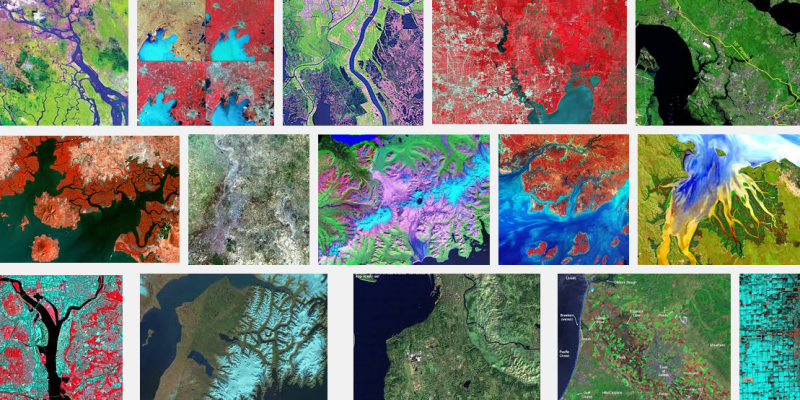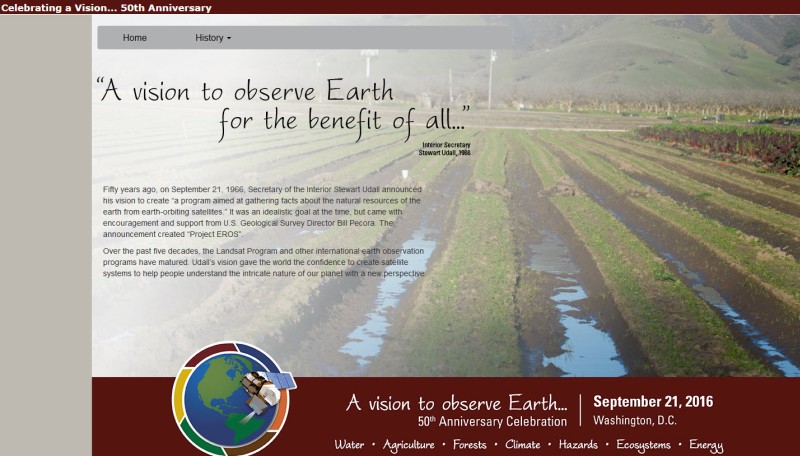Landsat data users handbook
http://www.greenpolicy360.net/mw/images/Landsat8DataUsersHandbook.pdf
Landsat data users handbook
LANDSAT 8 (L8)
Version 1.0
June 2015
The Landsat Program has provided over 42 years of calibrated high spatial resolution data of the Earth's surface to a broad and varied user community, including agribusiness, global change researchers, academia, state and local governments, commercial users, national security agencies, the international community, decision makers, and the general public. Landsat images provide information meeting the broad and diverse needs of business, science, education, government, and national security.
The mission of the Landsat Program is to provide repetitive acquisition of moderate-resolution multispectral data of the Earth's surface on a global basis. Landsat represents the only source of global, calibrated, moderate spatial resolution measurements of the Earth's surface that are preserved in a national archive and freely available to the public. The data from the Landsat spacecraft constitute the longest record of the Earth's continental surfaces as seen from space. It is a record unmatched in quality, detail, coverage, and value.
The Landsat 8 observatory offers these features:
Data Continuity: Landsat 8 is the latest in a continuous series of land remote sensing satellites that began in 1972.
Global Survey Mission: Landsat 8 data systematically builds and periodically refreshes a global archive of sun-lit, substantially cloud-free images of the Earth's landmass.
Free Standard Data Products: Landsat 8 data products are available through the USGS EROS Center at no charge.
Radiometric and Geometric Calibration: Data from the two sensors, the Operational Land Imager (OLI) and the Thermal Infrared Sensor (TIRS), are calibrated to better than 5% uncertainty in terms of top-of-atmosphere reflectance or absolute spectral radiance, and having an absolute geodetic accuracy better than 65 meters circular error at 90% confidence (CE 90).
Responsive Delivery: Automated request processing systems provide products electronically within 48 hours of order (nominally much faster).
The continuation of the Landsat Program is an integral component of the U.S. Global Change Research Program and will be used to address a number of science priorities, such as land cover change and land use dynamics. Landsat 8 is part of a global research program known as NASA’s Science Mission Directorate, a long-term program that is studying changes in Earth's global environment. In the Landsat Program tradition, Landsat 8 continues to provide critical information to those who characterize, monitor, manage, explore, and observe the land surfaces of Earth over time.
The U.S. Geological Survey has a long history as a national leader in land cover and land use mapping and monitoring. Landsat data, including Landsat 8 and archive holdings, are essential for USGS efforts to document the rates and causes of land cover and land use change, and to address the linkages between land cover and use dynamics on water quality and quantity, biodiversity, energy development, and many other environmental topics. In addition, the USGS is working toward the provision of long-term environmental records that describe ecosystem disturbances and conditions...
http://www.satimagingcorp.com/satellite-sensors/other-satellite-sensors/landsat-8/
○
June 2016: Coming Soon, 50th Anniversary of Landsat
Background
Steward Udall proposes 'Earth Observation' program, 1966 launch - http://eros.usgs.gov/udall50thanniversary/udall.php
President Reagan moves to cancel Landsat, George Brown acts to continue Landsat
George Brown political action saved the Landsat program. The Congressman out in front of "big science" for decades was a key figure in the Landsat program, the long-running database of imagery of Earth that is moving on to its fifth decade with Landsat 9 (and open access) as a result of Brown's efforts. On the House science committee for over 30 years, George led an array of science efforts, including one that greens look to as prescient -- he drafted legislation establishing the first national climate change research program via the National Climate Program Act of 1978. Congressman Brown, from 1964 until his untimely passing in 1999, was a mentor for your GreenPolicy Siterunner.
○
NASA: Earth Sciences
http://www.greenpolicy360.net/w/Landsat_data_users_handbook
Landsat 9 will propel the program past 50 years of collecting global land cover data
- A New Satellite for One of the Great U.S. Space Programs
Landsat 9 will launch in 2023, and promises the continuity of a critical, long-running database for imagery of the Earth's surface
○
http://spaceflightnow.com/2015/04/21/multiple-satellites-planned-in-long-term-landsat-program/
http://www.gizmag.com/nasa-landsat-9-usgs/37083/
http://spacenews.com/landsat-9-office-opens-at-goddard-procurement-decisions-loom/
○

